


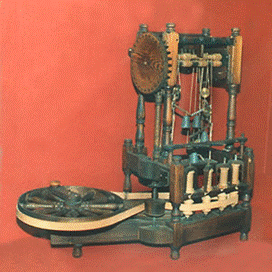
The Water Frame
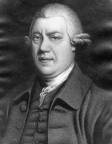 Sir Richard Arkwright was an English inventor born on December 23, 1732. His construction of a machine for spinning, the water frame, patented in 1769, was an early step in the Industrial Revolution. His invention was a spin-off of James Hargreaves spinning jenny. His machines and his gift for organization enabled him to establish the world's first cotton mill and he helped to start the factory system. He became very wealthy and was knighted in 1786. He died at age 59 in 1792.
Sir Richard Arkwright was an English inventor born on December 23, 1732. His construction of a machine for spinning, the water frame, patented in 1769, was an early step in the Industrial Revolution. His invention was a spin-off of James Hargreaves spinning jenny. His machines and his gift for organization enabled him to establish the world's first cotton mill and he helped to start the factory system. He became very wealthy and was knighted in 1786. He died at age 59 in 1792.
Picture Sources:
Water Frame: http://www.cleo.net.uk/followtheyarn/timeline/maufacturing_1769.html
Portrait: http://www.cottontown.org/page.cfm?pageid=2725&uuid=56807a78-70b2-4c40-8719-e4ba74a7b4b4
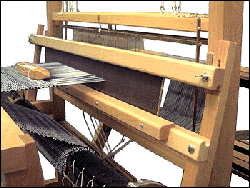
The Flying Shuttle
 John Kay was born in Lancashire, England on June 17, 1704. In 1733 the English inventor patented the famous flying shuttle. The flying shuttle was operated by pulling a cord that drove the shuttle to either side, freeing one hand of the weaver to press home the weft. John Kay was hated among weavers because his invention replaced their job. A lot of factory owners copied his invention but never paid him a royalty. Although John Kay was the inventor of one of the most important machines of the Industrial Revolution, he died in poverty.
John Kay was born in Lancashire, England on June 17, 1704. In 1733 the English inventor patented the famous flying shuttle. The flying shuttle was operated by pulling a cord that drove the shuttle to either side, freeing one hand of the weaver to press home the weft. John Kay was hated among weavers because his invention replaced their job. A lot of factory owners copied his invention but never paid him a royalty. Although John Kay was the inventor of one of the most important machines of the Industrial Revolution, he died in poverty.
Picture Sources:
Flying Shuttle: http://industrialrevolution.sea.ca/innovations.html
Portrait: www.cottontown.org/page.cfm?pageid=605
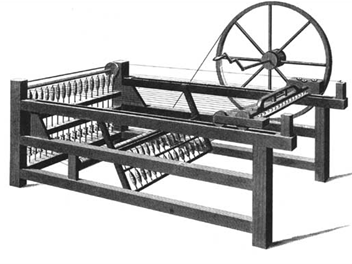
The Spinning Jenny
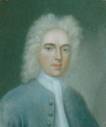 James Hargreaves was an English engineer that lived in a small town of Blackburn, England. In 1764 James's invention of the spinning jenny came about by accident. Hargreaves turned the accident into a working product. In result the spinning jenny could produce eight times as many cards as the spinning wheel. James Hargreaves invention lead to multiple machines being created involving the spinning process. He too had legal troubles and in 1770 he finally received a patent for his creation.
James Hargreaves was an English engineer that lived in a small town of Blackburn, England. In 1764 James's invention of the spinning jenny came about by accident. Hargreaves turned the accident into a working product. In result the spinning jenny could produce eight times as many cards as the spinning wheel. James Hargreaves invention lead to multiple machines being created involving the spinning process. He too had legal troubles and in 1770 he finally received a patent for his creation.
Picture Sources:
Spinning Jenny: www.internethistory.leidenuniv.nl/index.php3?c=4
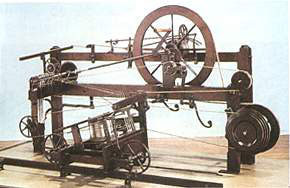
The Spinning Mule
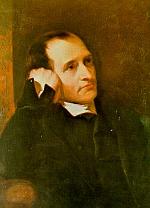 Samuel Crompton was born on December 3, 1753 at Firwood, in Bolton, Lancashire. He was the son of George Crompton and Elizabeth Holt, and he had two younger sisters. George died at the young age of 37, leaving Elizabeth to care for the poor family and send Samuel through school. At the age of 15, Samuel began operating the newly invented Spinning Jenny under the supervision of his mother, but became increasingly irritated with its limitations. Believing that he could do better, Crompton eventually locked himself in a room and secretly worked for five years to perfect his spinning mule, so-called because it was a cross between the jenny's twist action and the water frame's draw rollers, until it was completed in 1779. Machine-breaking riots immediately developed in his neighborhood however, forcing him to dismantle his machine. However, Crompton eventually reassembled and began operating his spinning mule, made of mostly wood with some metal parts. Although he originally intended to use the spinning mule to spin yarn for his own weaving, he eventually realized that it would be much more beneficial for him to spin yarn for others to weave. Now financially stable, Crompton married Mary Pimlott on February 16, 1780. Many spies tried to steal Cromptom�s idea and, because of the wording of Arkright�s water frame patent, it was nearly impossible for Crompton to patent the spinning mule. So instead he settled for a subscription with textile manufacturers which made the spinning mule free to all. Nonetheless, Crompton failed at many of his business endeavors until his death 1827.
Samuel Crompton was born on December 3, 1753 at Firwood, in Bolton, Lancashire. He was the son of George Crompton and Elizabeth Holt, and he had two younger sisters. George died at the young age of 37, leaving Elizabeth to care for the poor family and send Samuel through school. At the age of 15, Samuel began operating the newly invented Spinning Jenny under the supervision of his mother, but became increasingly irritated with its limitations. Believing that he could do better, Crompton eventually locked himself in a room and secretly worked for five years to perfect his spinning mule, so-called because it was a cross between the jenny's twist action and the water frame's draw rollers, until it was completed in 1779. Machine-breaking riots immediately developed in his neighborhood however, forcing him to dismantle his machine. However, Crompton eventually reassembled and began operating his spinning mule, made of mostly wood with some metal parts. Although he originally intended to use the spinning mule to spin yarn for his own weaving, he eventually realized that it would be much more beneficial for him to spin yarn for others to weave. Now financially stable, Crompton married Mary Pimlott on February 16, 1780. Many spies tried to steal Cromptom�s idea and, because of the wording of Arkright�s water frame patent, it was nearly impossible for Crompton to patent the spinning mule. So instead he settled for a subscription with textile manufacturers which made the spinning mule free to all. Nonetheless, Crompton failed at many of his business endeavors until his death 1827.
Picture Sources:
Spinning Mule: www.sheepcentre.co.uk/wool.htm
Portrait: http://www.bolton.org.uk/samuelcrompton.html
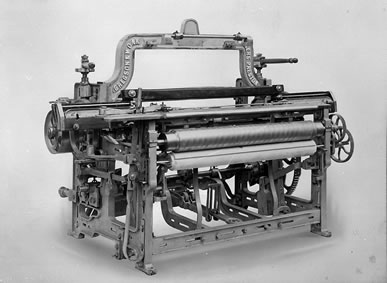
The Power Loom
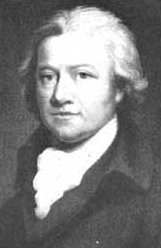 Edmund Cartwright was born into a landed family on April 24, 1743, in Marham, Nottinghamshire. He had two brothers, including John Cartwright who became a radical leader of parliamentary reform. Edmund was educated at the University of Oxford and became a minister for the Church of England. After visiting one of Arkwright�s factories in 1784, he set to work on his power loom to improve the speed and quality of weaving, and patented his water-powered loom in 1785. In 1787, Cartwright opened a factory in Doncaster, in which just about everything could be done mechanically and all that weavers were need for was to repair broken threads on the machine. However, as he was a poor businessman, Cartwright went bankrupt despite the success of the loom. In 1799, a Manchester company purchased 400 of Cartwright�s power looms, but other companies were discouraged from buying the looms because the company�s factory was soon afterwards burned to the ground, probably by workers who feared they would be laid off. In the early 1800s, many factories instead were using a modified version of Cartwright�s machine. When Cartwright discovered this, he went to the House of Commons for compensation, and with the help of Robert Peel, Cartwright managed to get �10,000 in 1809. With this money, Cartwright retired to a farm in Kent where he died in 1823.
Edmund Cartwright was born into a landed family on April 24, 1743, in Marham, Nottinghamshire. He had two brothers, including John Cartwright who became a radical leader of parliamentary reform. Edmund was educated at the University of Oxford and became a minister for the Church of England. After visiting one of Arkwright�s factories in 1784, he set to work on his power loom to improve the speed and quality of weaving, and patented his water-powered loom in 1785. In 1787, Cartwright opened a factory in Doncaster, in which just about everything could be done mechanically and all that weavers were need for was to repair broken threads on the machine. However, as he was a poor businessman, Cartwright went bankrupt despite the success of the loom. In 1799, a Manchester company purchased 400 of Cartwright�s power looms, but other companies were discouraged from buying the looms because the company�s factory was soon afterwards burned to the ground, probably by workers who feared they would be laid off. In the early 1800s, many factories instead were using a modified version of Cartwright�s machine. When Cartwright discovered this, he went to the House of Commons for compensation, and with the help of Robert Peel, Cartwright managed to get �10,000 in 1809. With this money, Cartwright retired to a farm in Kent where he died in 1823.
Picture Sources:
Power Loom: http://www.cleo.net.uk/followtheyarn/timeline/maufacturing_1785.html
Portrait: www.nndb.com/people/753/000082507/
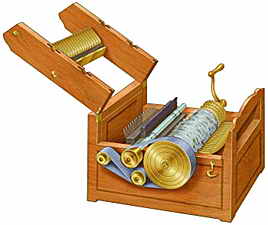
The Cotton Gin
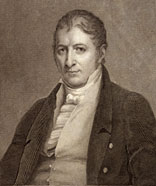 Eli Whitney was born the son of a farmer on December 8, 1765 in Westborough, Manchester. He graduated from Yale College in 1792 and placed his first patent on his cotton gin in 1793, and eventually got it patented on March 14, 1794. The cotton gin was a wooden machine with hooks that pulled cotton fibers through a mesh, deseeding them. Thus, the cotton gin allowed cotton to be cleaned much more quickly and efficiently then could be done by the difficult labor of man. His cotton gin brought the southern United States a lot of prosperity; however Whitney�s own cotton gin business went out of business in 1797. His patent expired in 1807, and Congress refused to renew it, however Whitney managed to get rich anyway by manufacturing his invention of muskets. He married Henrietta Edwards on January 6, 1817, with whom Whitney had four children before dying on January 8, 1825 in New Haven, Connecticut.
Eli Whitney was born the son of a farmer on December 8, 1765 in Westborough, Manchester. He graduated from Yale College in 1792 and placed his first patent on his cotton gin in 1793, and eventually got it patented on March 14, 1794. The cotton gin was a wooden machine with hooks that pulled cotton fibers through a mesh, deseeding them. Thus, the cotton gin allowed cotton to be cleaned much more quickly and efficiently then could be done by the difficult labor of man. His cotton gin brought the southern United States a lot of prosperity; however Whitney�s own cotton gin business went out of business in 1797. His patent expired in 1807, and Congress refused to renew it, however Whitney managed to get rich anyway by manufacturing his invention of muskets. He married Henrietta Edwards on January 6, 1817, with whom Whitney had four children before dying on January 8, 1825 in New Haven, Connecticut.
Picture Sources:
Cotton GIn: www.juliantrubin.com/bigten/whitneycottongin.html
Portrait: http://www.vintageskivvies.com/pages/archives/history/massproductionbegins.html